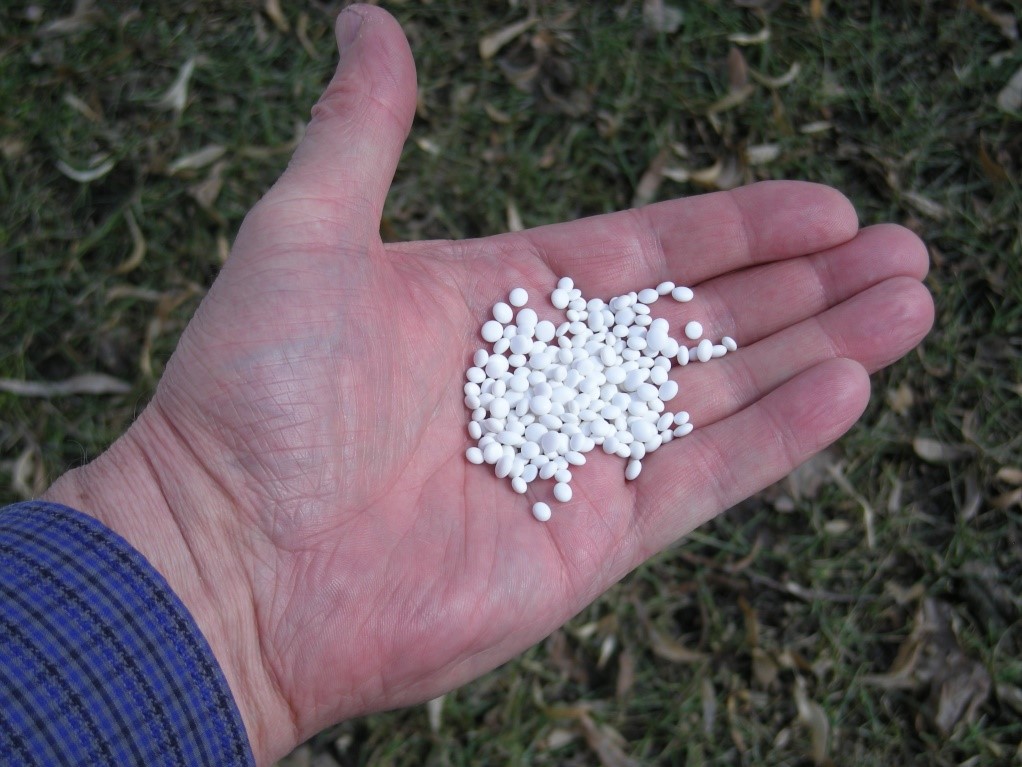Sept. 16, 2019 – Did you ever wonder why your home and garden fertilizer has specific ratios of nutrients? Well, the story goes back even further – to the discovery of those elements! Phosphorus is one of the main “ingredients” for healthy plant growth. This year, 2019, is the 350th anniversary of the discovery of the element phosphorus, so the Soil Science Society of America (SSSA) and the American Society of Agronomy (ASA) are celebrating Phosphorus Week. We’ve gathered five Soils Matter blogs telling the story of phosphorus, its uses, and the “paradox” of too much or too little of this limited resource.
The first blog in the series covers some basics about how Hennig Brandt (accidentally) discovered the element phosphorus. Before 1669, phosphorus (chemical symbol P) was not a known element. It certainly was present in living matter but determining what it was didn’t come easily. It was the first element discovered with “modern” scientific techniques!
“ ’P’ – in the form of “pee”, or urine, also happens to be the source of phosphorus’ discovery,” says blogger Andrew Sharpley, University of Arkansas. “It’s true: Hennig Brandt, the alchemist who discovered phosphorus, found the “P” in “pee.” (Also true, soil scientists do have their own special sense of humor!) Read the entire post about phosphorus basics here: https://soilsmatter.wordpress.com/2019/09/15/the-discovery-and-general-uses-of-phosphoru
The second blog in the series explains why phosphorus is a necessary ingredient in feeding the world. Phosphorus is essential to all life, including crops. Phosphorus provides the chemical backbone for many of biology’s most important processes:
- replication of organisms (DNA, RNA),
- energetic currency of metabolism (ATP, NADP), and
- gatekeeper for moving compounds across cell walls (phospholipids).
“So, without phosphorus, crops would not grow into healthy plants,” says blogger Pete Kleinman. “If the end-product of crop production is grain or beans, the yield would be lower from phosphorus-deficient plants. And, like humans, plants can get sick when they have nutrient deficiencies. Too little phosphorus will stunt plants, restricting both root and shoot growth.” Kleinman works with the USDA. Read his entire blog here: https://soilsmatter.wordpress.com/2019/09/15/why-is-phosphorus-needed-on-farms
The sources of phosphorus for crops are covered in the third blog. Phosphorus is a limiting factor in crop yields, so without sources of it, crop yields stay low. “Farmers in places such as China and Wales recognized the benefits of using bones as a source of fertilizer many centuries ago,” says blogger Don Flaten. “By the 1700s and 1800s, countries such as England recognized the fertility value of bones.” Flaten works at the University of Manitoba.
“In the mid-1800s, chemists discovered that rock phosphate could be turned into an effective fertilizer. This discovery opened up the opportunity for using this much larger and cheaper source of phosphorus to make agricultural fertilizer.” Unfortunately, rock mining can be harmful to the environment, and resources are limited. Thus, the future of phosphorus fertilization could come from recycling on-farm sources of phosphorus. In addition, phosphorus could be recovered from wastewater treatment plants and reused on farms. Read more: https://soilsmatter.wordpress.com/2019/09/15/what-are-sources-of-phosphorus-for-crops
The challenges of too little and too much phosphorus are described in the fourth blog. “We now face a ‘phosphorus paradox’,” says Helen Jarvie. “Too little phosphorus threatens our food security. Too much phosphorus is a major cause of water-quality impairment worldwide. Our future food and water security will be increasingly dependent on our ability to better manage phosphorus. So, finding solutions to the “phosphorus paradox” are of monumental significance for humankind.”
Jarvie is a scientist with the Centre for Ecology and Hydrology, UK. To read her entire blog, visit: https://soilsmatter.wordpress.com/2019/09/15/what-are-the-challenges-regarding-phosphorus-use
The responsibility to manage phosphorus better lies with everyone – farmers, land managers, city manager, parks managers, and even the general public. Don Flaten gives the public 10 suggestions that can help solve the phosphorus paradox. Read his entire blog here: https://soilsmatter.wordpress.com/2019/09/15/ten-things-we-can-do-to-manage-phosphorus-better
Phosphorus week is being celebrated by the Soil Science Society of America and American Society of Agronomy. Spokespeople are available to speak with journalists about these topics during the week.
